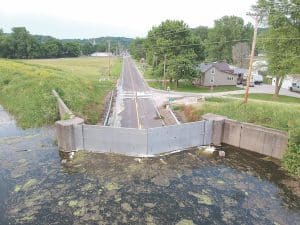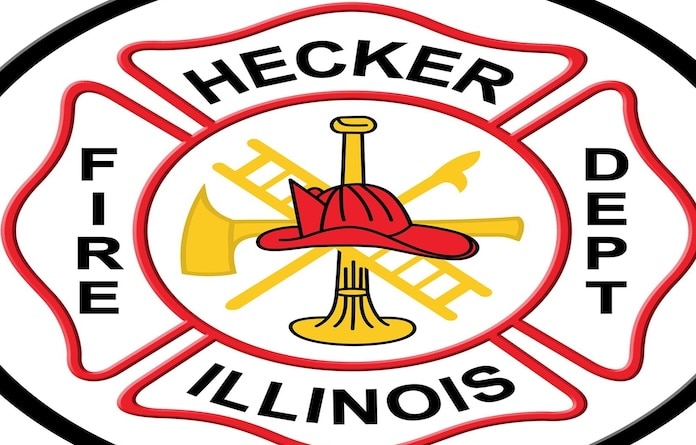FEMA decision looms for Prairie du Rocher

The 297-year-old village of Prairie du Rocher may soon be the recipient of some bad news because the levee that protects the town will not be re-accredited by the Federal Emergency Management Agency.
That could lead to serious consequences for the town of approximately 600.
“That puts us in the lowest classification for flood insurance,” Prairie du Rocher Modoc Levee District Commissioner Stephen Gonzalez said. “So that’s going to start raising the rates for property owners who have flood insurance or have to have flood insurance.”
FEMA has told the village rates could jump by as much as 10 percent a year, though Gonzalez said a fair number of residents do not have flood insurance.
De-accreditation would also require the county to enforce construction restrictions, lest FEMA pull its flood insurance altogether.
Restrictions would include having electricity in buildings at a certain height because the village and surrounding area would be considered “an open valley with no levee protection,” Gonzalez said.
FEMA’s Preliminary Flood Insurance Rate Maps, which were released in June, show the town as just that: a Special Flood Hazard Area.
Prairie du Rocher has been battling this issue for over a decade.
The 15.5-mile levee was last re-accredited in 2004. But after Hurricane Katrina in 2005, the rules governing levees changed.
The changes meant Prairie du Rocher’s levee, which was built in the 1940s, was not accredited.
FEMA gave the village provisional accreditation in 2006 to allow it time to determine what needed to be done to get re-accredited.
The town worked with a private firm to conduct engineering studies on the levee before switching to the U.S. Army Corps of Engineers because that entity was more affordable.
The village paid the Corps about $90,000 to conduct studies for about a year and a half, with much of that money coming from fundraising.
The results were not what the village hoped for.
The Corps determined the main problem was underseepage and provided the village with two expensive solutions – despite initially estimating it would be a quick and relatively cheap fix.
According to Prairie du Rocher Chamber of Commerce President Amy Barbeau, one option would have involved fixing 11 relief wells already in place, abandoning 157 other wells and building 457 new ones.
That would cost about $39 million and have an annual maintenance bill of about $1 million.
The second option was creating a levee around the current one, which is a more permanent solution, but would require the village to acquire over 250 acres of farmland and cost almost $60 million.
“It was like a Catch-22 for us because the study identified the underseepage issues in the district itself, and FEMA then used that against us for decertification because the Corps made it almost impossible with the dollars needed to get certification,” Gonzalez summarized.
FEMA has said it should have the final maps done this year, so the town should soon get official word that the levee is not re-accredited.
Gonzalez said the best solution would be to institute a watershed tax in the area on both sides of the Mississippi River because development and infrastructure on the Missouri side contributes to the problems.
He estimated that would take about a decade if the idea receives political support.
In the meantime, the Prairie du Rocher is taking its own steps to ensure the town’s survival.
Despite the bad news, Barbeau said the situation is not too dire.
“The de-certification of the levee in Prairie du Rocher should be considered more of a setback in our ongoing efforts to protect the village, and another large hurdle to overcome, more so than what some have called the beginning of the town’s demise,” she said. “As long as residents are willing to continue to work together toward solutions to any given problem, there is always a way to prevail.”
The village currently has a steering committee comprised of various individuals working on a solution.
After about two years of work, the committee has decided to pursue adding the village to the national park designation that St. Genevieve, Mo. received earlier this year.
Gonzalez said that makes sense because the French settlers who founded Prairie du Rocher moved across the river to that town because they were apprehensive of British rule.
If that happens, the federal government would need to invest money to protect Prairie du Rocher.
“The history is the only thing we’ve got left to save the little village,” Gonzalez said.
The history helped in 2004, when the government invested money to help raise the levee.
The village plans to have information available to the public on its plans this fall, as it is still working on getting everything finalized.
When the time comes, Gonzalez said Prairie du Rocher will need help from the public to pressure politicians to add it to the national park designation.
He was optimistic about that happening.
“There’s hope out there,” he said.






